Although most will identify the name Imhotep with the evil antagonist of the two The Mummy films (1932 and 1999), is actually written in gold letters in the history of art for having created the famous stepped pyramid for Pharaoh Zóser, which was the first great funerary monument and laid the foundations for those who immediately left to become icons of Egyptian civilization, the pyramids of Giza. But, in addition, Imhotep was a unique character, so prestigious that he even became deified and is the first known engineer and architect in history.
Zoser, which in his time was called Necherjet (Divine Body; it was not until the New Kingdom that he began to figure in royal lists as Dyeser, i.e. Sublime ) was the son of Khasekhemui, the last pharaoh of the 2nd dynasty. However, it did not happen to him but to the founder of the III, Sanajt, who sometimes appears with his throne name (the one that was officially put on the cartouches), Nebka, hence in classical antiquity they referred to him like Nequeroquis or Nequerofes.
Sanajt would be his older brother or his uncle, it is not clear. Let us clarify that the periodization system by dynasties, devised by the priest Manetho, does not follow a genealogical criterion but rather a chronological one, passing from one to another for purely practical reasons.
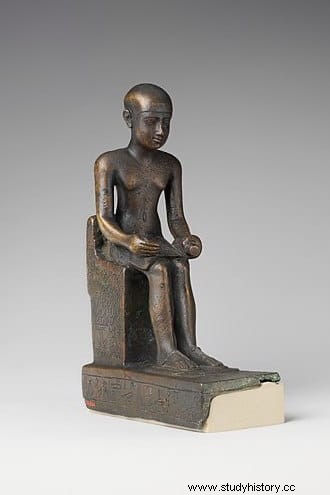
In any case, Zoser donned the crown around 2665 BC. and reigned nineteen years, until 2645 B.C. He established court at Abydos and chose the necropolis of Bet Khalaf, about ten kilometers away, to build his tomb. It was a mastaba, an Arabic word that designates a type of tomb with a rectangular plan and a truncated pyramidal elevation, made of bricks or stone, in which the burial chamber was underground and only had access through a well that was filled up after the funeral. However, the works were abandoned because the pharaoh moved his residence to the capital, Memphis.
Consequently, a new place was designated for the eternal rest of his mortal remains:Saqqara, on the west bank of the Nile and several hundred kilometers from Abydos, which would indicate that the pharaoh had achieved considerable power because he could develop his project far from the traditional place of royal burials, with all that it implied in logistical matters.
In Saqqara there was another ancient necropolis, where Narmer is believed to be buried, the monarch who unified Egypt and thus began the 1st dynasty, which was to become a very special corner over time.
And all thanks to Imhotep (or Imutes, as the Greeks called him), who appears in history holding the hand of the new pharaoh as his chaty or tyaty , "he who is the will of the master, the ears and eyes of the king"; vizier, to use a more familiar term, once again of Muslim etymology.
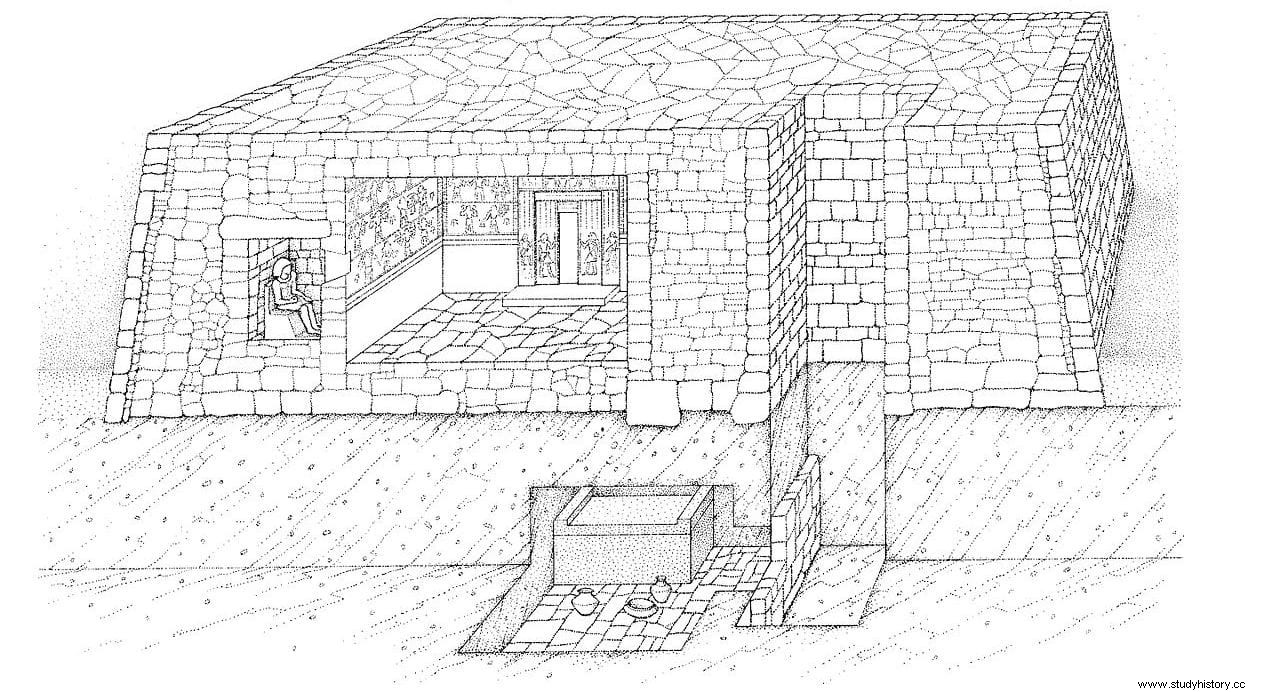
Although it was Snefrú, the first pharaoh of the IV dynasty, who created this dignity nominally for his son Nefermaat, the first positions of this type had arisen in the II dynasty, accumulating a wide variety of powers. Even more so in the case of Imhotep, since he was also high priest of Heliopolis, whose thriving clergy had been associated with the monarchy.
But he was a multidisciplinary scholar:engineer, mathematician, astronomer, sculptor... Before undertaking the construction of the Zoser pyramid, he already had enormous prestige as a doctor, being considered one of the authors of what a millennium later, to base of copies, was reflected in the famous Edwin Smith papyrus (a document written in hieratic that describes fifty war wounds, with their corresponding analyses, diagnoses and treatments).
In fact, Imhotep would end up deified, assimilating his figure first to that of Nefertum -primordial god-, then to that of Thoth -god of mathematics and medicine, patron of the scribes- and finally to that of Asclepius -Greek divinity. Of medicine-.
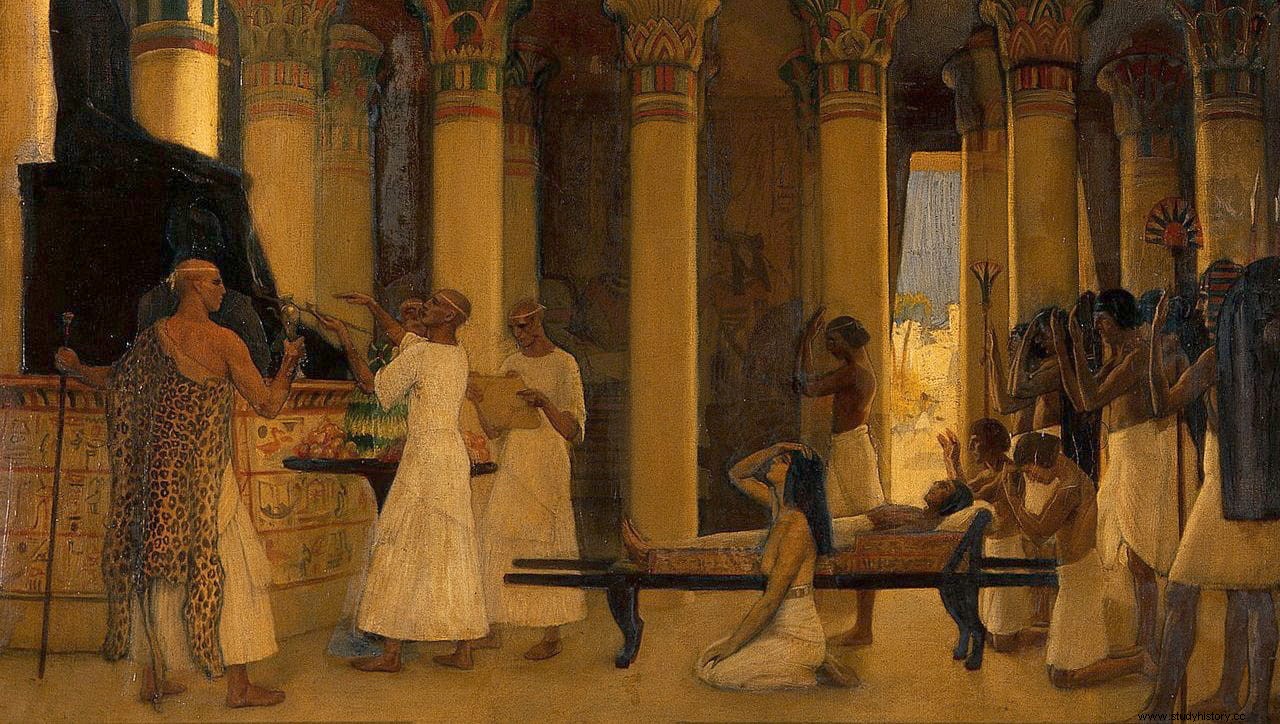
But what has truly made him pass into posterity, beyond the scope of Egyptologists and historians of medicine, is his facet as an architect. Imhotep, who among his collection of titles (Treasurer to the King of Lower Egypt, Treasurer to the King of Upper Egypt, Administrator of the Great Palace, Hereditary Lord, High Priest of Heliopolis, Maker of Stone Vessels…) included overseer of all works of stone , he received from the pharaoh the commission to design the future mausoleum for him and the eminent official decided to do something revolutionary.
If for Sanajt he had already built an atypical mastaba, with a square plan instead of a rectangular one, this time he went one step further and devised six overlapping mastabas, progressively decreasing in size. This is how the stepped pyramid was born, which at that time reached a fabulous height of more than sixty meters and which was also revolutionary in the material it was made of, since limestone was used in general when until then adobe bricks had been used; this multiplied the weight of the set, which he solved by reducing the size of the blocks. The burial chamber was still underground, as in normal mastabas.
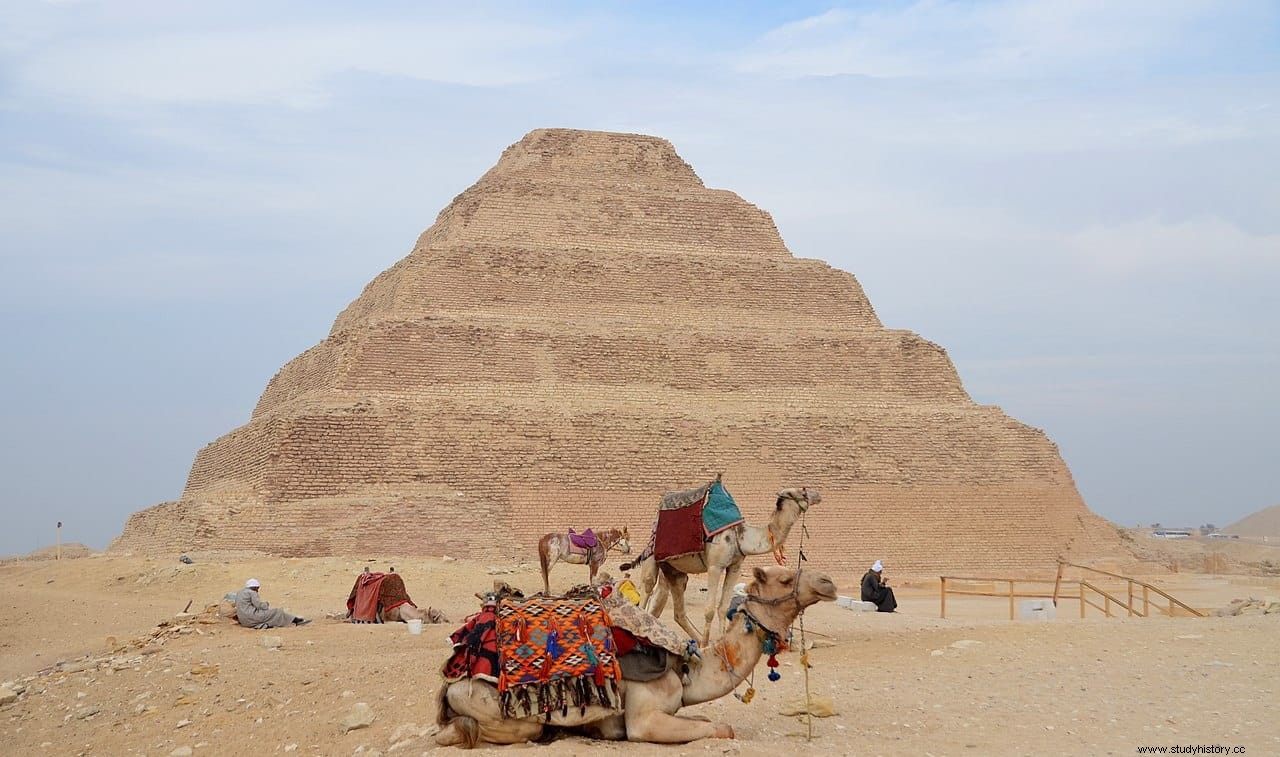
It was not a work that was finished in a day, obviously. It lasted for years and involved thousands of workers, which shows the aforementioned control of human and material resources by the state, as well as giving rise to some Egyptologists venturing that Zóser was not nineteen years on the throne but twenty-nine, as he said Manetho in his Aegyptíaka (a chronicle of the history of Egypt that includes a list of pharaohs ordered, as we said before, by non-genealogical dynasties).
In addition, the works were not limited to the pyramid but extended to the entire enclosure, since the one in Saqqara is a fifteen-hectare funerary complex that includes various structures:the Serapeum (burial place for sacred oxen) and other temples; mastabas of the kings of the First Dynasty; several tombs of the pharaohs of the II, apart from that of Shepseskaf, which was from the IV; the pyramids of Userkaf, Dyedkara-Isesi, Unas, Pepy I, Merenra I and Pepy II, as well as that of Queen Teti; and a fortnight of mastabas of members of the court. All this surrounded by a perimeter wall a kilometer and a half long, within which a monastery was also located millennia later.

The impact of the stepped pyramid was such that the following pharaohs of the dynasty wanted theirs. The first was Sekhemkhet, who probably also turned to Imhotep, but had no luck:he only reigned for six years and died without seeing the completion of the work, whose dimensions were larger than Zoser's (we must speak in the past tense, since today only the foundations). His successor, Jaba, was on the throne just as long, so he didn't have time for anything either. Next came Qa-hedyet, who ruled for more than a quarter of a century, but was buried at Abydos.
Then the IV dynasty began with the aforementioned Snefrú, who would advance a step in the construction of pyramids erecting three, no less:the stepped one of Meidum, the rhomboid or elbowed one and the first one properly said, the Red one, the latter two in Dashur. Then came Khufu (Cheops), the one from the Great Pyramid of Giza; Djedefra (who made his in Abu Roash and today it is demolished); Jafra (Kefrén, also in Giza) and Menkaura (Micerino, who would complete the famous architectural trio). The cost and effort of building pyramids proved to be excessive and from then on they returned to the mastabas, until in the New Kingdom they moved on to the hypogea, tombs carved into the rock.
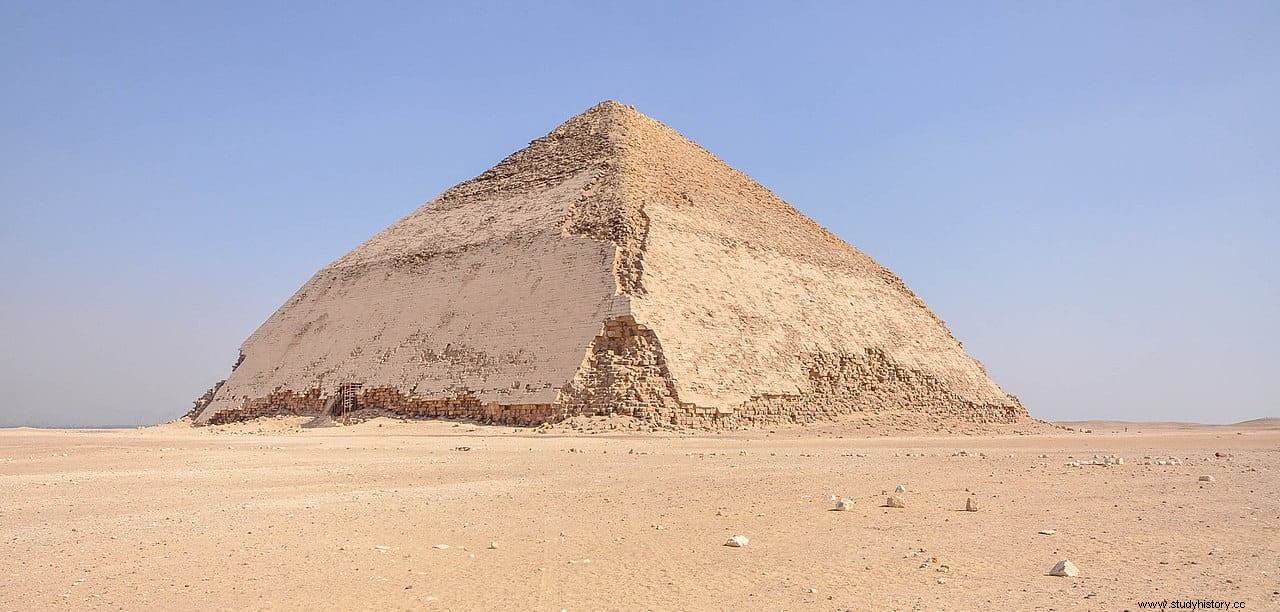
What happened to Imhotep? In fact, it is not known exactly how his life was due to the lack of sources during the first thousand two hundred years after his death, hence we ignore his date and place of birth, as happens with those of his death - presumably he lived until the reign of Unas, the last of the dynasty. From his time there are hardly three inscriptions that identify him as a vizier and it is necessary to wait until the reign of Amenhotep III (corresponding to the XVIII dynasty and who reigned between the years 1391-1353 BC approximately) to find the first text about him, an invocation nun in a tomb revealing that she was regularly worshiped.
However, the earliest references to his medical wisdom are from the 4th century BC, when he ruled the 30th dynasty:thus more than two millennia after his lifetime, which may have distorted the memory of him. character. In that sense, experts believe that he possibly mentioned the story entitled Jufu and the magicians (part of the Westcar Papyrus, an anthology of magical tales written during the 12th dynasty), which recounts a miracle performed by a priest from the period of King Djoser. Unfortunately, the piece is in poor condition and the fragments where Imhotep's name would appear have been lost. Another papyrus, in this case from the 2nd century AD. and found in the temple of Tebtunis, tells a story in demotic script about Djoser and his vizier.

Likewise, he is reviewed with all his titles in the famous Canto del harpista , a poem from the First Intermediate Period (21st century BC) found in the funerary chapel of Pharaoh Intef VII. Thanks to these and other documents, it was found out that Imhotep had achieved an unusual reputation; so much so that his name even appears written next to Zoser's on his statues, something unheard of then. And ironic, since the vizier was semi-divinized after his death and later, in the Saite Period, fully deified; something that was also rare in non-royal characters, to the point that there are no more than a dozen cases, while the pharaoh did not.
The cult of his person had its center in Memphis and, according to the myth, he was the son of a woman named Jeredu-anj, assimilated as a demigoddess descendant of Banebdjedet (a theromorphic divinity with the head of a ram who was venerated in Djedet, a city of Nile delta better known by its Greek name of Mendes, and which was the equivalent of the Khnum of Upper Egypt), and brother of Renpetneferet. The prayers in his name requested the healing of sick relatives and it is assumed that he carried them out through dreams, following a typical combination of medicine and magic.

However, we said before that Imhotep was also identified with Nefertum, so he would be the son of Ptah (god of architecture and crafts, patron of Memphis) and his consort Sejmet. Likewise, during the Ptolemaic Period they worshiped him from Alexandria to Meroe, passing through Thebes, Philé (where he had his own temple) and Deir el-Medina, together with Amenhotep, another famous vizier and architect (at the service of the homonymous pharaoh), of whom it was said that it was his brother; baseless, of course.
That Memphis constituted the main site of his memory, as well as his intense association with Zoser, lead researchers to suppose that Imhotep was buried in Saqqara. Unfortunately there is no record for sure because the location of his tomb is unknown. Another irony of fate.
